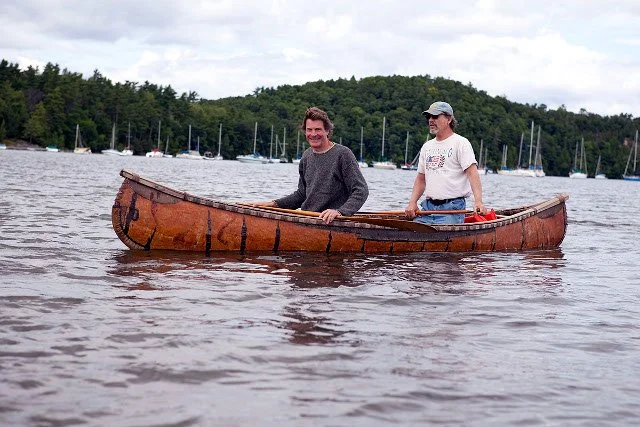2009
Early July
Earlier this month I went over to Maine to give a talk at the Carpenter's Boat Shop, a small and very unique boat building school in Pemaquid, near Damariscotta. I was originally scheduled to teach a week-long half model making/lofting workshop but we didn't get enough students. I had also offered to give my lecture on traditional Japanese boat building, and my wife and I decided that going over for two days and being hosted by the school would make a nice little vacation for us. The talk was well attended by a very knowledgeable and enthusiastic crowd (but of course, this was the coast of Maine). One attendee, Bob Holtzman, writes a blog called Indigenous Boats, and just recently he wrote to say that he had blogged about my talk, with some detail on the Japanese tub boat (my first apprenticeship) and, as one thing leads to another on the web, one of the comments to his blog post was a blogger from England, Gavin Atkin, who shared a very interesting link to the story of a man, a tub, and the ocean.
2009
Mid - Late July
As someone whose work so often involves historic boats and boat building traditions, its not surprising that I decided to get involved with the Quadricentennial of Samuel de Champlain's discovery of Lake Champlain, which was a major event in this region in 2009. Past celebrations, in 1909 and 1959, had leaned heavily toward the reenactment theme, with the 1959 celebration featuring a gathering of two dozen birch bark canoes made especially for the event by the Maniwaki Reserve in Quebec. Three members of the tribe came to Vermont, and local young men were hired to "play Indian" while one distinguished looking man was dressed as Champlain, and this Canoecade, as it was called, traveled around the lake for three weeks.
This year's events featured art, music, drama, storytelling and parades, with few nods toward the historic event. Champlain had left Quebec in his shallop with a group of about a dozen men. When their European style boat could not pass the falls at Chambly on the Richilieu River, Champlain and two of his men joined the two dozen native canoes that his allies (primarily Algonquins) and continued on to the lake that now bears his name. He entered the lake on July 14, 1609 and I organized a flotilla of birch bark canoes for a paddle to Burlington for July 14, 1909. Ted Behne, a noted historian and builder of birch bark canoe models offered to invite canoeists, and locally we invited any recreational paddler or kayaker to join our event. In the end we had birch bark canoes from Maine to Michigan to Maniwaki. The latter canoe was built on the reserve by the grandson of the man who built the canoes in 1959. The canoes were displayed at Shelburne Farms the morning of the event. Our arrival in Burlington was greeted by over three hundred people who mobbed the canoes and their owners when they came out of the water. That evening the canoes were exhibited at ECHO, the Leahy Center for Lake Champlain.



